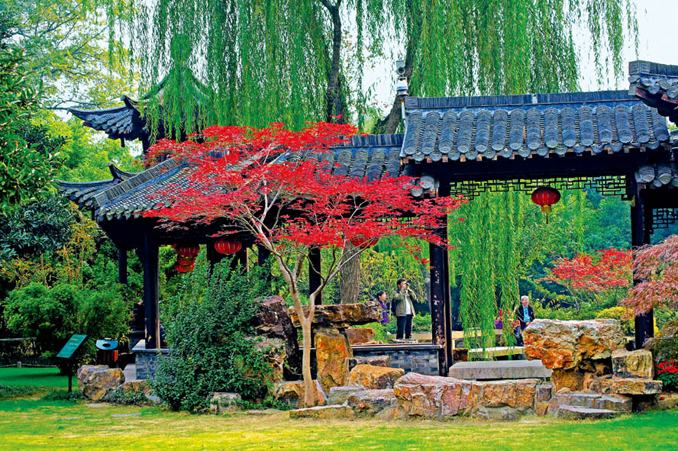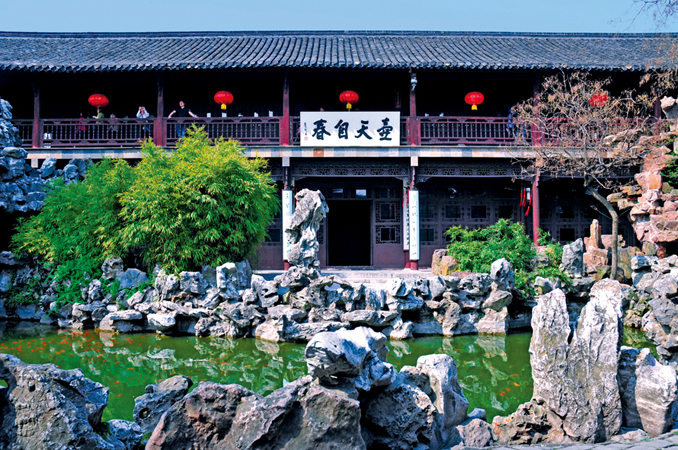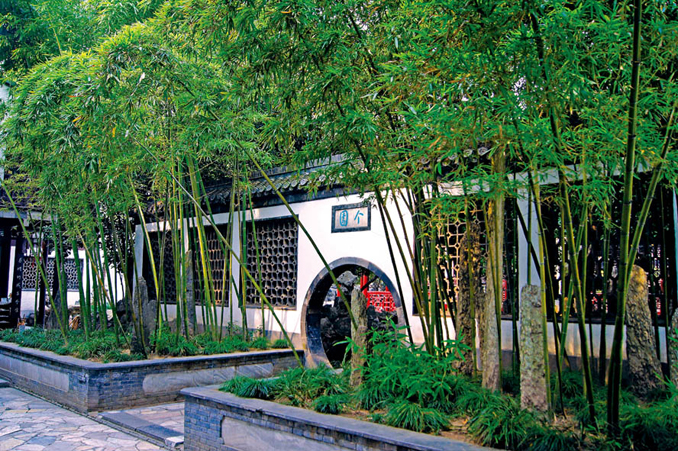
Written by: Lou Qingxi
Posted on: July 16, 2013 | 
Geyuan Garden
In the Ming and Qing Dynasties (1368?1644 AD and 1636?1911 AD, respectively), garden construction was extremely popular in Yangzhou of present Jiangsu Province, and private gardens were found in abundance both inside and outside the city. The frequent ravages of war have left only a few gardens fully conserved, and one of them is the Geyuan Garden. The Geyuan Garden used to be the private residence of a rich salt merchant, Huang Yingtai, and was built in the 23rd year of the Emperor Jiaqing’s Period, in the Qing Dynasty(1818, AD). Huang Yingtai was also known as ‘Geyuan’, and the garden was abundant with bamboo (written in Chinese characters with two of the characters side by side). Hence, the name of the garden is ‘Geyuan.’
 |
The Geyuan Garden is situated within Yangzhou city proper behind the Huang residence, and is 0.55 hectare in size. There is not much construction except for the two-storey ‘Seven-room Building’ that overlooks the entire garden, and serves as the venue for the owner’s social activities. At the southeast end of the garden, three halls named ‘Wind Chasing and Moonlight Filtering’ have been built, which were ideal for watching snow scenes in winter.
The most outstanding feature of this garden is the way the rocks are piled in it. On the west side of the Seven-Room Building lies a large artificial hill with lake stones, with the highest point at the center of the hill at 6 meters. Interspersed on both sides, the rocks go all the way down into the water. A stone room has been built within the hill, with winding paths leading deep inside; and it is the coolest hideaway in summer. The entire body of the hill is built with lake stones, each curiously shaped, delicately textured, and grayish white in color, and the hill is named ‘Summer Hill.’ At the east end of the building, however, the hill is built with yellow stone, forming the main peak 7 meters in height with all kinds of peaks, ridges, and mountain ranges. Paths twist and turn within the hill, joining gullies, valleys and cave houses. On the west side of the hills, the setting sun paints the ochre-colored stone surface with the color of the golden fall, and, thus, the hill has been named the ‘Autumn Hill.’
 |
The Wind Chasing and Moonlight Filtering Hall is built for the enjoyment of winter snow scenes, therefore pale white stones are placed in the shady area below the walls of the front hall, creating an illusion of unthawed snow. The hill is known as ‘Winter Hill.’ These three artificial hills, together with the ‘Spring Hill’ built with stone shaped like bamboo-shoots, form the highlight of the Geyuan Garden, with mountain scenes symbolizing spring, summer, autumn and winter.
Although not large in size, the pond in the garden is built with twisting and turning banks, and small bays run into the caves of the Summer and Autumn Hills, which make the little pond suddenly come to life. The entire bank of the pond is built with lake stones, some of which touch upon the water surface while others hover above the water forming caves, adding further to the sense of agility of the pond water.
 |
The Geyuan Garden was a private garden built during the Jiaqing Period (to put it more accurately, in the year 1818, AD) of the Qing Dynasty. Private gardens in the late Qing period were especially built by aristocrats and rich merchants, who were keen on the pursuit of luxury and in demonstrating their riches, unlike the simple elegance and subtle style of Scholar gardens. The Geyuan Garden is a typical example of gardens of this period. Despite the beauty of the stones of four seasons, the garden's overly ornate artistry has taken away much of its natural appeal.
You may also like: